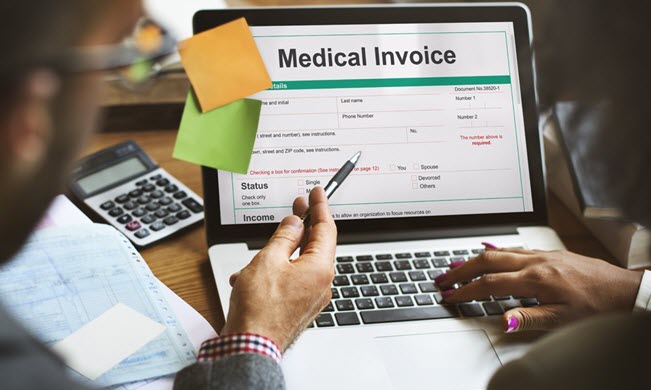When you talk about the top two challenges to cash flow for health care providers, two sources come to mind. One is the insurance payers and the other is waiting for patients to pay their out-of-pocket fees. One billing code error and a late payment may not seem like a big deal. But over time, they accumulate, and that can make your clinic more reliant on credit to meet payroll, purchase supplies and stay operational. It also makes it more difficult to meet your revenue goals.
The following will take a look at some of the top cash flow challenges to medical clinics, with tips and solutions to improve your organization’s revenue cycle management.
Waiting for insurance payment
Filing a claim and waiting for the insurance company to work through the layers of approval can be a waiting game, and that’s where this cash flow challenge can be beyond your control.
Claim denials, however, is one area where you can take back some of that control and unlock tied-up revenue. All too many claim denials are rooted in human error, whether it was an incorrect billing code, or missing or incorrect information was provided about the patient and their insurance coverage. In fact, some 84% of health care leaders responded in a survey that inaccurate coding and clinical documentation is the main source of revenue losses. While these claims can be corrected and resubmitted, human error can tie up a significant piece of your cash flow — tens or even hundreds of thousands of dollars.
What can medical clinics do to manage this challenge?
-
- Appoint an internal team tasked with auditing these claim denials, and make recommendations to improve processes to improve cash flow.
- Develop checklists and forms to ensure billing and reimbursement processes are accurate.
- Consider appointing another team to take on claim denials, even if they weren’t caused by human error. This practice can sharpen your team’s skills when it comes to handling insurance companies, reduce surprise billing for your patients and improve your clinic’s ability to get paid.
How patient self-payment creates cash flow challenges
Over the past decade, we’ve seen a burgeoning number of high-deductible, high-premium health care plans on the market. According to the most recent statistics from the Kaiser Family Foundation, the annual deductible for family coverage is $4,779. Another report finds that 42% of patients delay paying their medical bills because they can’t afford them. Because of these higher out-of-pocket costs, clinics and hospitals are dedicating more staff and resources to collecting payment from their patients.
To shorten the gap, it may be time to give your patient-facing billing and collection processes a hard look.
Be transparent
Before they receive care, help patients understand their payment obligations as much as you can.
- Before the patient enters the clinic, pull together some facts and figures. Begin with a query on their current deductible status. For those with co-pays, be upfront with what those would cost. For those paying out of pocket, inform the patient they will be billed. When possible, provide a price range, so they’re not surprised when the invoice arrives in the mail.
Practice patient-friendly billing
Many medical bills confuse patients, but a few adjustments can give them the information they need to take the next step.
-
- Not all medical bills make it clear when payment is due. They may wonder if their visit was processed by insurance yet, if you need payment now.
- State clearly what your patient is paying for; eliminate jargon when possible.
- Offer the option of installment payments, especially for bills that exceed $100.
Provide a digital payment option for patients
If you make it easier for patients to use their preferred payment methods, whether it’s online or with their mobile device, they’ll be more likely to pay on time. Even better, electronic payments mean funds become available in your account more quickly.
-
- Talk to your banker at Minnwest Bank about cash management tools that can get digital payment tools up and running. Card processing solutions for the clinic and its website give patients a safe and convenient method to use their preferred payment options.
- Because these devices use the Automatic Clearing House network (ACH), the funds are available and accessible immediately — no manual processes, no check float time.
Digitize paper check payments
Most insurance payers have switched to digitized ACH payments, transferring the funds directly into your accounts. But paper checks aren’t going away anytime soon; many businesses use them, and you likely have patients who prefer them as well. ACH payments cover some 80% of healthcare transactions, according to a report published in Med City News, but that means most clinics and hospitals are still receiving paper checks.
Businesses regard paper check payments as free. But manual tasks to process checks add time, which delays access to your funds. Factor in mail delivery, data entry, reconciling and going to the bank, and these insert several days between the time the payment was sent and your access to the funds.
These manual tasks also come with labor costs, to the tune of $1.22 per payment, according to the National Electronic Payments Association.
If your clinic is still processing a thick stack of paper checks each month, there’s a cash management tool that can make quick work of these.
Remote Deposit Capture (RDC) captures the data from a simple image scan and deposits the funds electronically into your account. These sophisticated check scanners also collect the data on the check, and exports it to your accounting software. Instantly, the payer’s name, check number and payment amount is then logged into your system, and even eliminates the need to reconcile checks. Depending on the size of your clinic and your check scanning needs, RDC can be completed with a desktop scanner or with a mobile device. Either way, it’s a cash management solution that can speed up your payment processes.
When it comes to running a medical care facility, cash flow issues come with the territory. Using cash management solutions is one way to streamline some of these obstacles, and get access to funds more quickly. Meet with a helpful cash management specialist at Minnwest Bank. We’re located right in your community and ready to help your clinic get more done!


